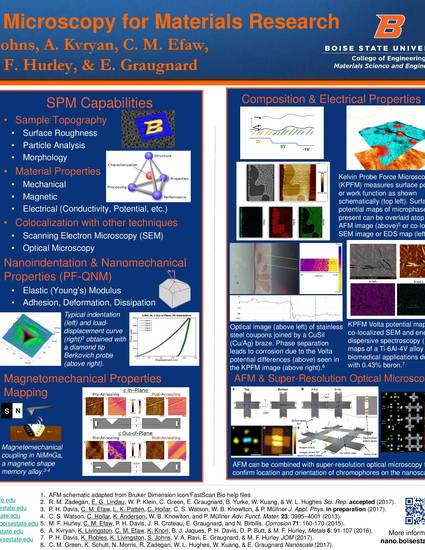
Scanning probe microscopy (SPM) encompasses a set of advanced techniques for mapping the structure and properties of the surfaces of materials from the atomic to micro scales. The most widely used SPM technique is atomic force microscopy (AFM), in which forces exerted between the tip of a needle probe and the sample surface can be measured with extremely high precision. By recording these forces as the tip rasters across the surface, an image of the sample surface topography is obtained. Beyond the surface topography, several SPM techniques can provide quantitative information about the properties of a material’s surface. These include scanning Kelvin probe force microscopy (KPFM) for surface potential measurements, scanning capacitance microscopy (SCM) for surface capacitance mapping, conductive and tunneling AFM (C-AFM and TUNA) for imaging the electrical conductance of a surface, as well as several techniques for imaging the mechanical properties of a surface. These advanced SPM techniques provide tools for direct structure-property correlations in materials at the nanoscale and are powerful capabilities for materials research, especially when co-located with other surface analytical techniques. Each of these advanced SPM techniques is available for materials research in the Boise State University Surface Science Laboratory.
Available at: http://works.bepress.com/michael_hurley/21/
